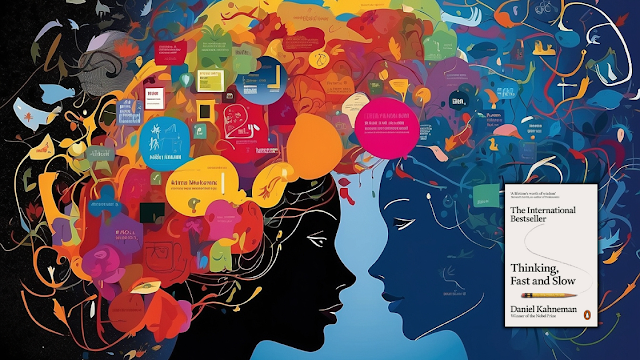Open the secrets of direction and perception with "Thinking, Fast and Slow" by Daniel Kahneman. Investigate the double frameworks that administer our points of view and figure out how these experiences can reshape how you might interpret human way of behaving.
Presentation: Exploring the Mental Scene
In this investigation of "Thinking, Fast and Slow" by Daniel Kahneman, we set out on an excursion through the multifaceted functions of the brain. Find how Kahneman's earth shattering work reveals insight into the double frameworks affecting our dynamic cycles.
1. The Two Systems: A Dynamic Duo
Delve into the core concept of the book, where Kahneman introduces the two systems that govern our thinking—System 1 and System 2. Uncover how these systems interact and influence our everyday choices.
2. System 1: The Fast and Intuitive
Explore the characteristics of System 1, the rapid, intuitive system responsible for quick decision-making. Understand how it operates effortlessly, often relying on heuristics and biases.
3. System 2: The Slow and Analytical
Contrastingly, System 2 involves slow, deliberate thinking. Examine how this system engages in critical analysis, problem-solving, and decision-making, requiring more effort and conscious attention.
4. Anchoring Bias: Unraveling the Influence
Investigate the anchoring bias, a cognitive phenomenon highlighted by Kahneman. Gain insights into how our decisions are unconsciously swayed by initial reference points, impacting subsequent judgments.
5. Prospect Theory: The Psychology of Choices
Uncover the nuances of prospect theory, a key element in "Thinking, Fast and Slow." Understand how our perceptions of gains and losses influence decision-making, often deviating from traditional economic models.
6. Overconfidence and Its Pitfalls
Examine the concept of overconfidence and its potential pitfalls. Kahneman's work sheds light on how individuals tend to overestimate their abilities and the impact this has on decision-making.
7. Loss Aversion: The Fear of Losing
Dive into the psychological aspect of loss aversion—a powerful force in decision-making. Explore how the fear of loss often outweighs the desire for gain, influencing choices across various scenarios.
8. Cognitive Strain: Understanding Mental Effort
Explore the implications of cognitive strain on decision-making. Kahneman's insights reveal how mental fatigue can lead to reliance on System 1 thinking, impacting the quality of decisions.
9. Application in Everyday Life: Real-world Scenarios
Bridge theory with practicality as we apply Kahneman's concepts to everyday life. Understand how recognizing these cognitive biases can enhance decision-making in personal and professional spheres.
10. The Legacy of "Thinking, Fast and Slow"
Reflect on the enduring impact of Kahneman's work. Explore how "Thinking, Fast and Slow" has influenced fields like economics, psychology, and decision sciences, shaping our understanding of human behavior.
FAQs: Exploring Normal Questions
Q: How has "Thinking, Fast and Slow" influenced the field of social financial matters?
Understanding the subtleties of independent direction has altered social financial matters. Kahneman's work established the groundwork for investigating unreasonable decisions and their monetary ramifications.
Q: Could the bits of knowledge from the book at any point be applied in proficient settings?
Totally. Perceiving mental predispositions can improve dynamic in different expert settings, from positions of authority to cooperative conditions.
Q: What recognizes System 1 thinking from System 2?
System 1 works easily and naturally, while System 2 includes intentional, insightful reasoning that requires cognizant exertion.
Q: How does misfortune repugnance impact customer conduct?
Misfortune abhorrence can lead customers to go with decisions in light of the apprehension about losing as opposed to the potential for gain, affecting buying choices.
Q: Is "Thinking, Fast and Slow" open to readers without a foundation in brain research or financial matters?
Indeed, Kahneman handily presents complex ideas in an open way, making the book reasonable for a wide crowd.
Q: What commonsense advances can one take to conquer mental predispositions in navigation?
Mindfulness is the initial step. By perceiving mental predispositions, people can intentionally draw in System 2 reasoning, prompting more educated and levelheaded choices.
End: Mastering the Art of Decision-Making
As we close our excursion through "Thinking, Fast and Slow," embrace the freshly discovered comprehension of the unpredictable interaction among instinct and thought. Daniel Kahneman's work fills in as a compass, directing us through the intricacies of decision-production with lucidity and understanding.

